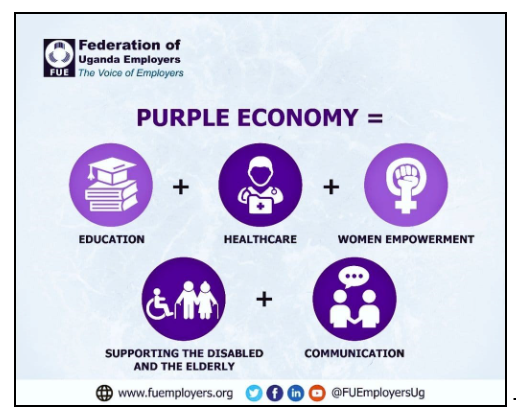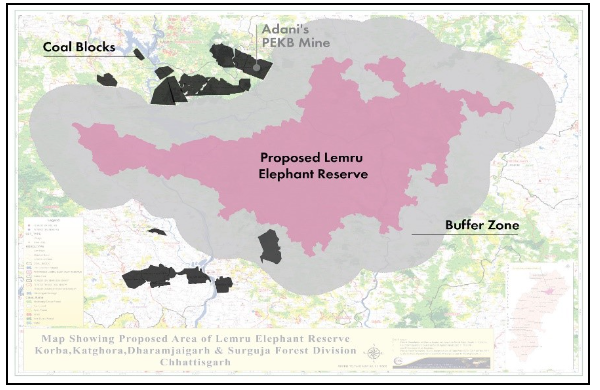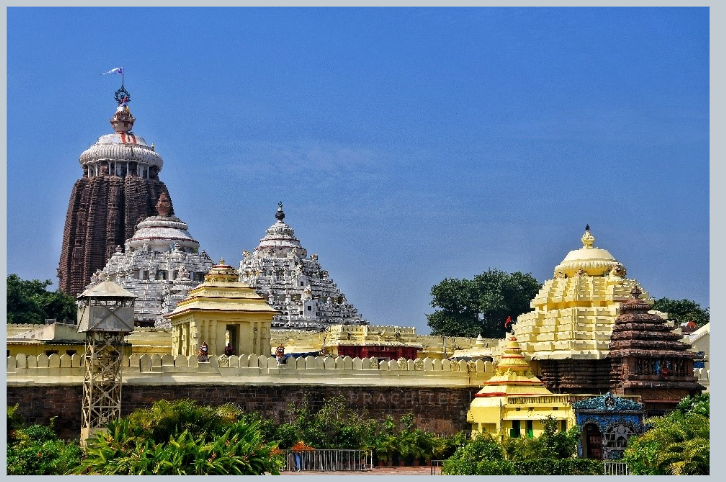Thursday, 26th October 2023
Biomass Co-Firing in Thermal Power Plants
In News Centre for Science and Environment (CSE) conducted a 2022 study on the implementation of co-firing biomass in NCR's coal-fired thermal power plants.
Major Findings of the Survey by CSE
1. Slow Movement in Biomass Co-Firing:
- The CSE study revealed that, as of the end of 2022, most coal-fired thermal power plants (TPPs) in the NCR were only in the trial phase of biomass co-firing. Unfortunately, little improvement was noted since then, with only three plants reporting increased biomass co-firing from December 2022 to August 2023.
2. Delayed Implementation of Biomass Co-Firing because of following reasons
- CSE investigated the delay in achieving the mandated 5% biomass co-firing in coal TPPs in the NCR and nearby areas.
- Harduaganj Thermal Power Plant credited success to a reliable biomass supply but noted the need for a stronger supply chain.
- Haryana Power Generation Corporation faced technical and supply challenges, Mahatma Gandhi Thermal Power Plant required significant investments for compliance
- Talwandi Saboo TPP struggled to find vendors due to a lack of established technology.
3. Initiatives to Address Supply Hurdles:
- Some plants, such as Indira Gandhi TPP, have taken steps to address supply challenges by issuing tenders for raw materials and considering in-house pellet manufacturing units and partnerships for biomass pellets.
4. Obstacles in Employing Biomass Co-Firing to Curb Agricultural Stubble Burning:
- Despite government directives and efforts to enhance pellet manufacturing capacity, the study indicates that biomass co-firing may not significantly reduce farm fires.
- Effective stubble burning reduction requires timely planning and a coordinated approach, from coal TPPs issuing tenders to crop residue procurement by pellet manufacturers, as the issue is time-sensitive.
About Biomass co-firing
- Biomass co-firing involves substituting a portion of coal with biomass at coal thermal plants.
- It integrates biomass as a partial substitute for coal in high-efficiency coal boilers.
- Existing coal power plants need retrofitting to enable co-firing, where coal and biomass are combusted together.
- This method efficiently converts biomass into electricity, reducing greenhouse gas emissions from power plants.
- Globally recognized as a cost-effective way to decarbonize coal power fleets.
- In India, it addresses the issue of burning biomass in the open by providing an accessible solution for cleaner coal.
- Co-firing 5 to 7% biomass pellets in thermal power plants can mitigate 38 million tonnes of CO2 annually (as per the 2022 budget speech).
Government Measures to Promote Biomass Co-firing:
- Financial support from the MNRE and CPCB for biomass pellet manufacturing units.
- RBI categorizes 'Biomass pellet manufacturing' as an eligible activity under Priority Sector Lending (PSL).
- Establishment of a dedicated procurement category for biomass on the Government e-Marketplace (GeM) portal.
- The Ministry of Power introduces a Revised Model Long-Term Contract for Biomass Supply to ensure a steady supply chain.
- Udyam Aadhaar registration on the National Single Window System simplifies administrative processes for biomass projects.
The Path Ahead:
- Ensure a consistent biomass supply chain by collaborating with farmers, forestry companies, and biomass suppliers.
- Develop essential infrastructure and logistics for biomass transportation, storage, and processing.
- Establish a robust policy and regulatory framework to support biomass co-firing, including specialized equipment and retrofitting for existing plants.

|
Prelims (2013) Q. With reference to the usefulness of the by-products of sugar industry, which of the following statements is/are correct?
Select the correct answer using the codes given below: (a) 1 only Answer: (c) |
Source: DTE
Global Tax Evasion Report 2024
In News: The European Union Tax Observatory's 'Global Tax Evasion Report 2024' addresses key concerns regarding tax evasion, emphasizes the Global Minimum Tax (GMT) on billionaires, and proposes measures to combat tax evasion on a global scale.
Reforms at the international level to tackle tax evasion include:
- Global Minimum Tax
- A standardized minimum tax rate on corporate income worldwide, with the OECD proposing a 15% minimum tax on large multinational corporations.
- This initiative, supported by 136 countries, including India, aims to prevent tax competition through lower rates, reducing profit shifting and tax base erosion, generating an estimated $150 billion in additional annual tax revenues.
- Automatic Exchange of Information
- Introduced in 2017, the automatic exchange of information was implemented to combat offshore tax evasion among affluent individuals.
Obstacles in Addressing Offshore Tax Evasion:
- Although offshore tax evasion has reduced over the last decade, with only 25% of the formerly untaxed wealth remaining from the 10% of the world's GDP stored in global tax havens in 2013, challenges persist.
- Issues include non-compliance by offshore financial institutions and limitations in the automatic exchange of bank information.
- Global billionaires often achieve effective tax rates of 0% to 0.5% by using shell companies to evade income taxation, with US billionaires at 0.5% and French billionaires at 0%.
- Multinational corporations (MNCs) shifted around $1 trillion to tax havens in 2022, equal to 35% of their profits earned outside their home countries.
- The report flags a concerning trend called "Greenwashing the Global Minimum Tax," where MNCs exploit 'green' tax credits to lower their tax rates below the 15% minimum.
- The root causes of tax evasion, wealth concealment, and profit shifting are policy choices or the absence of necessary decisions. Evaluating and enhancing tax policies is crucial for sustainable tax systems.
Recommendations:
- The report suggests a global minimum tax of 2% on billionaires' wealth and mechanisms to tax long-term residents who move to low-tax countries.
- These measures are viewed as vital for governments to boost revenue, address wealth inequality, and fund essential services like education, healthcare, and infrastructure.
- Reformation of international agreements on minimum corporate taxation to implement a 25% rate and eliminate tax competition loopholes.
- The introduction of unilateral measures to recover tax deficits from multinational firms and billionaires if global agreements fail.
- Progress toward creating a Global Asset Registry to enhance efforts against tax evasion.
- Strengthening the enforcement of economic substance and anti-abuse rules.
|
UPSC Previous Year Questions Prelims (2016) Q. The term ‘Base Erosion and Profit Shifting’ is sometimes seen in the news in the context of (2016) (a) mining operation by multinational companies in resource-rich but backward areas Answer: (b) |
Source: ET
Role of Dust Suppressants in Mitigating Air Pollution
In News: There has been considerable focus on dust suppressants as a viable means to mitigate dust-related pollution, particularly in cities like Delhi, where air pollution remains a pressing issue.
Dust Suppressants and their Effectiveness
- Dust suppressants typically consist of calcium or magnesium salts blended with water and applied to roads.
- This mixture efficiently curbs dust, offering longer-lasting relief from airborne particulate matter.
- According to a study by the Central Pollution Control Board (CPCB), dust suppressants, when combined with water, prove more effective in pollution control compared to traditional methods like water spraying.
- The study recorded a substantial reduction of up to 30% in dust concentration, encompassing PM10, PM2.5, and PM1, for construction sites and roads after dust suppressant application.
- Consequently, in 2019, the CPCB recommended using dust suppressants on excavated earth surfaces, construction and demolition waste piles, and access roads in construction zones.
Latest Technological Measures to Mitigate Air Pollution
- Ionisation Technology: A method to neutralize pollutants using ionization processes to enhance air quality in specific areas.
- Wind Augmentation and Air Purifying Unit (WAYU): A device designed for placement in various settings, including industrial complexes, residential areas, and near road intersections, to combat air pollution. It operates through wind generation for diluting air pollutants and active removal of pollutants.
- Medium/Large-Scale Smog Towers: Large-scale air purification towers designed to reduce particulate matter and pollutants on a substantial level.
- Indigenous Photonic System for Air Quality Monitoring: The Department of Science and Technology (DST) is developing a homegrown photonic system for real-time remote air quality monitoring, aiming to enhance data accuracy for effective pollution management.
Programs and Initiatives for Combating Air Pollution
- National Clean Air Program (NCAP)
- Pradushan Mukti Yantra (P-Mitra)
- STAR Rating of Industries:
- Green India Mission:
- FAME (Faster Adoption and Manufacturing of Hybrid and Electric Vehicles) Scheme:
- Swachh Bharat Abhiyan:
- Bharat Stage (BS) Emission Standards
- Odd-Even Scheme
- Pradhan Mantri Ujjwala Yojana
- National Mission for Clean Ganga (Namami Gange)
|
UPSC Previous Year Questions Prelims (2016) Q. In the cities of our country, which among the following atmospheric gases are normally considered in calculating the value of the Air Quality Index?
Select the correct answer using the code given below: (a) 1, 2 and 3 only Answer: (b) Mains (2021) Q. Describe the key points of the revised Global Air Quality Guidelines (AQGs) recently released by the World Health Organisation (WHO). How are these different from its last update in 2005? What changes in India’s National Clean Air Programme are required to achieve revised standards? |
Source: IE
Vienna Convention on Diplomatic Relations
In News: In response to allegations by the Canadian Foreign Minister, India's Ministry of External Affairs cited Article 11.1 of the Vienna Convention on Diplomatic Relations to assert that its actions comply with diplomatic protocol.
About Vienna Convention
- The Vienna Convention on Diplomatic Relations (1961) outlines fundamental principles for how countries must treat each other's diplomats.
- It grants diplomatic immunity to diplomats, ensuring their safety and freedom from arrest.
- The host country must respect and protect diplomats.
- It allows the host country to set reasonable limits on the size of foreign diplomatic missions and permits the host country to declare diplomats persona non grata without explanation.
- India ratified this convention in 1972, and it currently has 193 member countries.
Source: IE
Kunming-Montreal Global Biodiversity Framework
In News: The SBSTTA-25 meeting concluded in Nairobi aimed to facilitate the implementation of the Kunming-Montreal Global Biodiversity Framework (KMGBF)
Summary highlights of recent IPBES report
- Recent IPBES reports highlighted the role of invasive species in biodiversity loss.
- IPCC AR6 findings emphasized climate change as the main driver of biodiversity loss and its connection to climate adaptation.
- Experts noted that these issues, along with ocean acidification, desertification, land degradation, and pollution, are interconnected global crises.
Outcomes
- The group finalized 15 key points for presentation at COP16 to address these challenges effectively, in line with the Convention on Biological Diversity, the Kunming-Montreal Global Biodiversity Framework, and global initiatives like the UN Framework Convention on Climate Change and the 2030 Agenda.
- They also stressed the value of using the expertise of organizations like the World Health Organization and the Food and Agriculture Organization to support the implementation of the KMGBF.
About The Kunming-Montreal Global Biodiversity Framework (GBF)
- The Kunming-Montreal Global Biodiversity Framework (GBF) was adopted during COP-15 of the CBD
- It set an ambitious path to achieve global harmony with nature by 2050.
- It includes a '30 by 30' target, aiming to protect 30% of Earth's land and oceans by 2030.
- The framework has four goals for 2050
- conserve and restore biodiversity
- Ensure sustainable use
- Share benefits equitably
- Enable transformative change.
|
UPSC Previous Year Questions Prelims (2018)
Q. “Momentum for Change: Climate Neutral Now” is an initiative launched by (a) The Intergovernmental Panel on Climate Change Answer: (c) Prelims (2016) Q. What is/are the importance/importances of the ‘ United Nations Convention to Combat Desertification' ?
Select the correct answer using the code given below: (a) 1 only Answer: (c) |
Source: DTE
Paintbrush Swift Butterfly - Edukemy Current Affairs
In News
The paintbrush swift butterfly was recently observed and photographed in Himachal Pradesh's Chamba district for the first time.
About The Paintbrush Swift Butterfly
- The paintbrush swift butterfly belongs to the Hesperiidae family and had never been photographed in Himachal Pradesh since its discovery in 1878.

- This marks the first instance of capturing and documenting this species, which was first described by lepidopterist Frederic Moore over 145 years ago.
- It is recognized by the presence of two separated spots in the upper forewing cell.
- The butterfly's larvae feed on bamboo and other grass species.
- Its habitat spans northeast, central, and south India, with Uttarakhand having a rare presence.
- Major threats to its population include habitat loss, scarcity of larval host plants, increased pesticide use, deforestation, and climate change.
- It is legally protected in India under Schedule IV of the Wildlife (Protection) Act, 1972.
|
UPSC Previous Year Questions Prelims (2016) Q. Recently, for the first time in our country, which of the following States has declared a particular butterfly as State Butterfly? (a) Arunachal Pradesh Answer: (d) Exp:
Prelims (2016) Q. In which of the following regions of India are you most likely to come across the ‘Great Indian Hornbill’ in its natural habitat? (2016) (a) Sand deserts of northwest India Answer: (d) Exp:
|
Source: TH
Purple Economy - Edukemy Current Affairs
In News: Shanti Raghavan, leads EnAble India, an organization working to establish a 'purple economy' that emphasizes disability inclusion and widespread job opportunities.
About Purple Economy

- The purple economy is an economic concept that prioritizes the sustainability of caring labor, complementing the green economy.
- It aims to organize the system around caring labor's sustainability, rectify gender-based inequalities in unpaid and underpaid work, promote cultural potential in goods and services, and enrich the cultural environment.
- Examples of the purple economy include digital industries, tourism, luxury goods, and housing.
About Care Economy
- The Care Economy encompasses economic activities associated with delivering care and support services, frequently within healthcare, childcare, elderly care, and other fields dedicated to enhancing people's welfare.
- This encompasses both compensated and uncompensated care work and constitutes a fundamental element of both social and economic advancement.
Source: BL
COTP (Cigarettes and Other Tobacco Products) film rules
In News: According to a recent news report, the Indian Union government has reportedly reached a compromise with OTT streaming services regarding the inclusion of smoking warnings in their content.
Background
- Government have extended the COTP rules to OTT platforms with the OTT Rules 2023, which became effective on September 1 2023
- These rules mandate all OTT services, including major platforms like Netflix, Amazon Prime Video, and others, to display anti-tobacco health messages, warnings, and disclaimers as specified.
- The government asserts there will be no compromise on rule enforcement, and non-compliance may lead to government action.
About The Cigarettes and Other Tobacco Products (COTP) film rules
- The Cigarettes and Other Tobacco Products (COTP) film rules are regulations in India aimed at controlling and regulating the depiction of tobacco and smoking in films and audio-visual content.
- These rules require that films and other media content featuring tobacco use include warnings about the health hazards associated with tobacco consumption.
- This typically involves displaying anti-tobacco health spots, prominent static messages, and audio-visual disclaimers about the harmful effects of tobacco use within the content.
- The objective of these rules is to raise awareness about the risks of tobacco use and discourage its portrayal in a positive or appealing light in media.
Source: TS
Serbia - Edukemy Current Affairs
In News
Background

- The Kosovo-Serbia conflict revolves around Kosovo's declaration of independence from Serbia in 2008, which Serbia does not recognize.
- Kosovo has a predominantly Albanian population, while Serbia is primarily Serbian.
- The historical Battle of Kosovo holds significant national symbolism for both sides.
- The disintegration of Yugoslavia in the 1990s and the subsequent brutal conflict led to NATO intervention in 1999.
- Kosovo came under international administration, and its final status remains unsettled.
Current Status
- The current status is that Kosovo is recognized as an independent country by some nations, including the US and most of the EU, but not by countries like India, China, and Russia.
- India's stance is based on support for Serbia's sovereignty and territorial integrity.
|
UPSC Previous Year Questions Prelims (2023) Q. Consider the following pairs
How many of the above pairs are correctly matched? (a) Only one Answer: (d) |
Source: DH
Project UDBHAV - Edukemy Current Affairs
In News
The Indian Army, in collaboration with the United Service Institution of India (USI), concluded a hybrid-panel discussion within the framework of Project Udbhav.
About project UDBHAV
- Project Udbhav is an Indian Army initiative aimed at exploring and reviving ancient Indian statecraft and strategic wisdom from texts on warfare, diplomacy, and grand strategy.
- It encompasses a wide range of topics, including Indigenous Military Systems, Historical Texts, Regional Texts, and more.
- The project's core goal is to connect historical knowledge with contemporary military strategy and develop a strategic vocabulary rooted in India's cultural heritage.
- The ultimate objective is to integrate ancient wisdom into modern military education, enabling the Indian Army to apply age-old principles in today's complex strategic landscape.
- As part of Project Udbhav, the USI will host a Military Heritage Festival on October 21-22, 2023.
Source: TH
Lemru Elephant Reserves - Edukemy Current Affairs
In News
The Union Coal Ministry has decided not to auction Coal India Limited's 40 coal blocks in and around the Lemru Elephant Corridor (LEC) in response to a request from the Chhattisgarh government.
About Lemru Elephant Reserves
- The Lemru Elephant Reserve is situated in Chhattisgarh's Korba district and serves as a permanent habitat for elephants, with a focus on reducing property damage and human-elephant conflicts.

- It's part of an elephant corridor linking Lemru (Korba), Badalkhol (Jashpur), and Tamorpingla (Surguja).
- In India, there are 33 designated Elephant Reserves (ERs) spanning 14 states.
Project Elephant
- Project Elephant, launched by the Indian government in 1992.
- It operates as a Centrally Sponsored Scheme.
- Its main objectives are the protection of elephants, their habitats and corridors, addressing human-animal conflicts, and ensuring the welfare of captive elephants.
- The Ministry of Environment, Forest and Climate Change in India offers financial and technical support for its implementation in 16 states and Union Territories.
Source: HT
Hamas attacks impact Israel - Edukemy Current Affairs
Historical Context
The Israeli-Palestinian Conflict:
- The conflict is one of the world's most enduring military and political disputes, dating back to pre-World War I times when the notion of a Jewish homeland in Palestine emerged.
- The issue persisted due to ongoing Jewish migration into the region.
- In 1917, the Balfour Declaration from the British government expressed support for a Jewish homeland in British-administered Palestine.
The historical background of the Israeli-Palestinian conflict is as follows:
-
- In 1947, the United Nations General Assembly recommended a plan to partition Palestine into an Arab state, a Jewish state, and the City of Jerusalem.
- This led to a state of conflict between Arab and Jewish groups. In 1948, a Jewish state was established, opposed by the Arab League, which intervened, sparking the 1948 Arab-Israeli war.
- After a ceasefire agreement, Israel retained its mandated territory, while Jordan occupied the West Bank and Egypt occupied the Gaza Strip.
- In the Six-Day War of 1967, Israel captured the West Bank from Jordan and the Gaza Strip from Egypt.
- The current status involves the Oslo Accords of 1993, allowing the Palestinian Authority to be set up in the West Bank and Gaza Strip.
- In 2006, Hamas gained control over the Gaza Strip following the Battle of Gaza (2007).
- Presently, Hamas governs Gaza, while the West Bank is under Fatah's control, and both factions have different relationships with Israel.
Impacts on India
- Increased insurance costs for exporters
- Potential harm to Indian goods' competitiveness in a $10.7 billion trade
- A need to reconsider its diplomatic stance
- Condemnation of civilian attacks,
- Evacuation of stranded Indian citizens and concern for the Indian diaspora
- Potential delays in defense imports from Israel worth over Rs 74,000 crore
- Potential hindrances to India's Middle-Eastern projects, including the India-Middle East-Europe economic corridor
- Potential disruptions to shipping routes through the Suez Canal affecting India's trade with Europe.
Conclusion
- The ongoing conflict heightens geopolitical tensions, necessitating international collective efforts for a peaceful resolution.
- The reluctance of the Israeli government and other stakeholders complicates the situation.
- A balanced approach is crucial, not only for fostering positive relations with Arab countries but also for maintaining constructive engagement.
Source: IE
Share the article
Edukemy’s Current Affairs Quiz is published with multiple choice questions for UPSC exams
MCQ
Get Latest Updates on Offers, Event dates, and free Mentorship sessions.

Get in touch with our Expert Academic Counsellors 👋
FAQs
UPSC Daily Current Affairs focuses on learning current events on a daily basis. An aspirant needs to study regular and updated information about current events, news, and relevant topics that are important for UPSC aspirants. It covers national and international affairs, government policies, socio-economic issues, science and technology advancements, and more.
UPSC Daily Current Affairs provides aspirants with a concise and comprehensive overview of the latest happenings and developments across various fields. It helps aspirants stay updated with current affairs and provides them with valuable insights and analysis, which are essential for answering questions in the UPSC examinations. It enhances their knowledge, analytical skills, and ability to connect current affairs with the UPSC syllabus.
UPSC Daily Current Affairs covers a wide range of topics, including politics, economics, science and technology, environment, social issues, governance, international relations, and more. It offers news summaries, in-depth analyses, editorials, opinion pieces, and relevant study materials. It also provides practice questions and quizzes to help aspirants test their understanding of current affairs.
Edukemy's UPSC Daily Current Affairs can be accessed through:
- UPSC Daily Current Affairs can be accessed through Current Affairs tab at the top of the Main Page of Edukemy.
- Edukemy Mobile app: The Daily Current Affairs can also be access through Edukemy Mobile App.
- Social media: Follow Edukemy’s official social media accounts or pages that provide UPSC Daily Current Affairs updates, including Facebook, Twitter, or Telegram channels.





